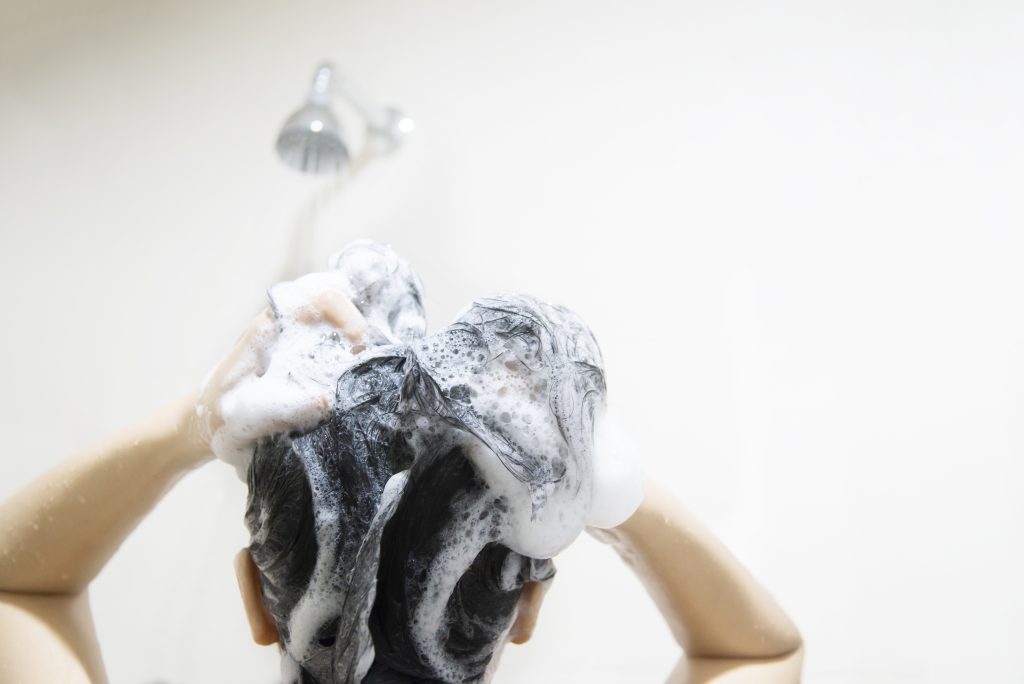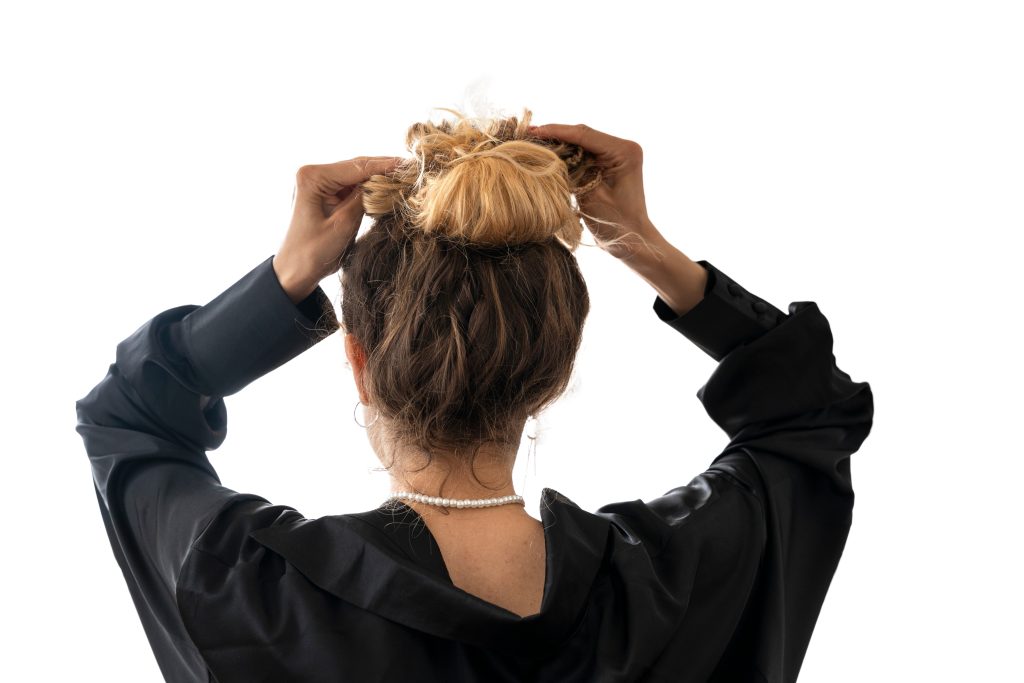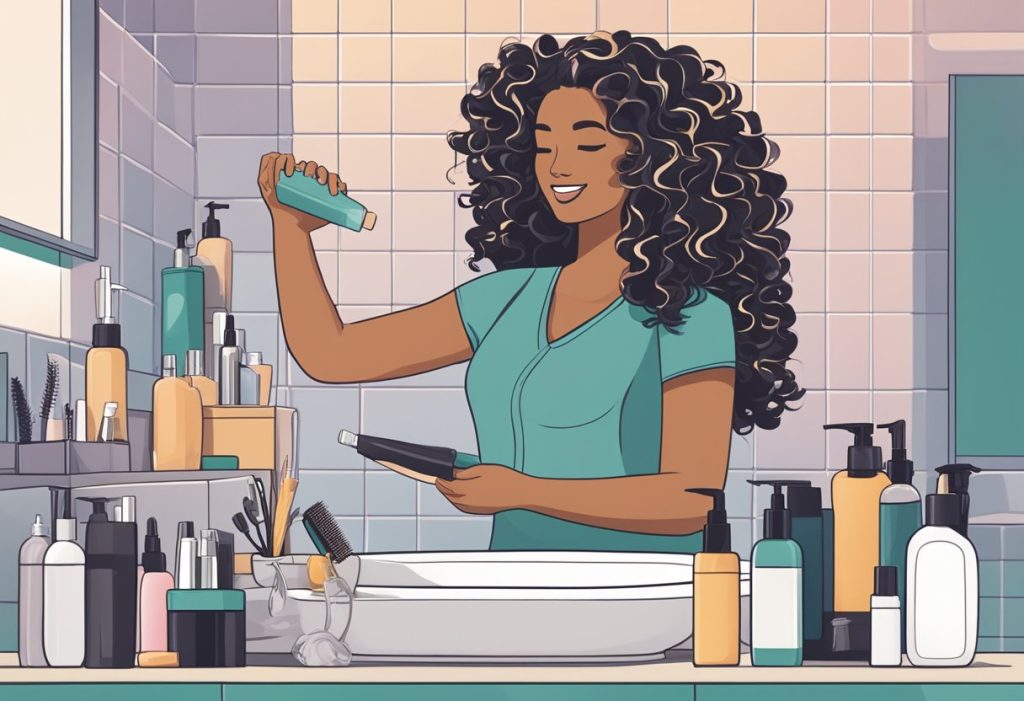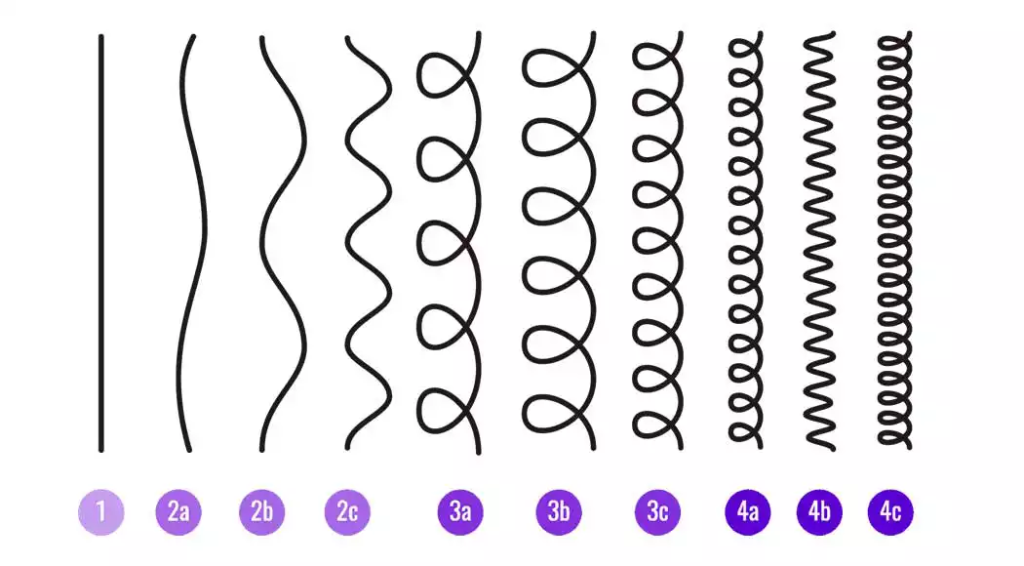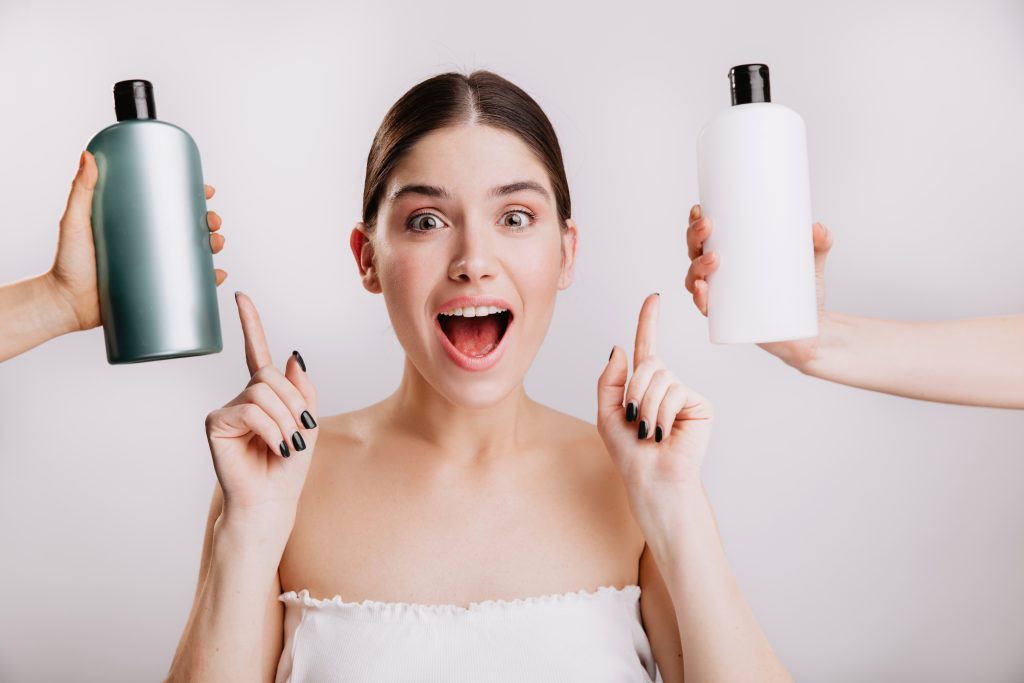Hair oiling has been an age-old practice, known to have numerous benefits in maintaining the health of your mane. By applying oil to your hair and massaging it into your scalp, you can provide essential nutrients and promote a good balance of vitamins for your strands.
But what exactly makes hair oiling so beneficial for your hair? Let’s dive into the reasons why.
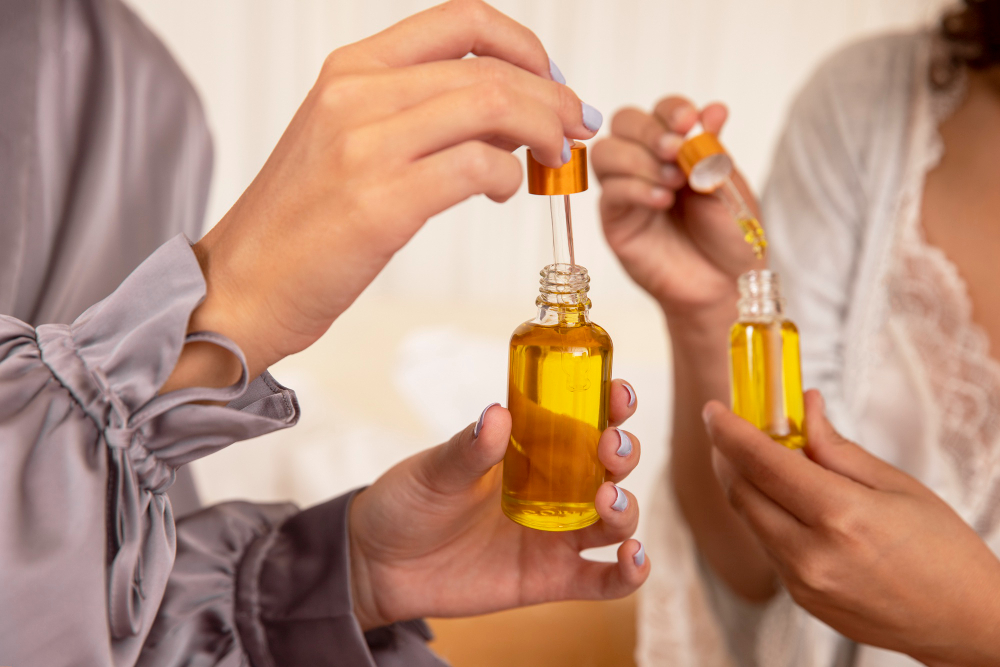
One of the primary reasons hair oiling is good for your hair is because it moisturizes and strengthens your strands. When oil is evenly distributed throughout your hair, it seals in the cuticle, which in turn helps lock in moisture and protect against damage. This can result in hair that’s less prone to frizz, breakage, and split ends. Furthermore, a proper hair oil massage can increase blood flow to your scalp, reducing hair fall and encouraging hair growth.
Benefits of Hair Oiling

Moisturizing Effect
Hair oiling helps to moisturize your hair, providing necessary hydration to the strands. Oils such as coconut and olive oil have been found to strengthen hair fibers by filling in gaps to keep them moisturized and silky smooth. The fatty acids found in these oils help to lock in moisture and prevent dryness, resulting in healthier hair.
Promotion of Hair Growth
Applying oil to your scalp has many benefits, including improved blood circulation that may promote hair growth. Massaging the oil into your scalp stimulates blood flow, allowing nutrients and antioxidants to reach your hair follicles, maintaining hair health, and encouraging growth. Oils like rosemary and argan oil are especially used for hair growth.
Dandruff and Dry Scalp Treatment
One of the main reasons for dandruff and dry scalp is a lack of hydration. Oiling your hair can help in maintaining scalp health by providing necessary nutrients, vitamins, and minerals. Regular hair oiling can also improve scalp hygiene, preventing dandruff and itching caused by dryness. The best oils for this are tea tree and castor oil.
Protection from Damage
Hair oils offer protection from damage, such as split ends and breakage, and provide an additional layer of defense from environmental factors like UV rays. Jojoba and argan oil are a perfect choice for damage controll.
Enhanced Shine and Softness
Hair oiling can enhance shine and softness, leading to less frizz and more manageable hair. Using coconut and argan oil, you may notice a visible improvement in the texture and appearance of your hair.
How to Choose the Right Oil for You

By Hair Type
When selecting a hair oil, consider your specific hair type. For dry hair, opt for nourishing oils like coconut oil or almond oil to help lock in moisture and combat frizz. On the other hand, if you have oily hair, lighter oils such as jojoba oil or grapeseed oil might suit you better, as they don’t weigh your hair down.
Here is a brief breakdown of popular hair oils for different hair types:
- Dry Hair: Coconut oil, almond oil, or argan oil
- Oily Hair: Jojoba oil, grapeseed oil, or tea tree oil
- Normal Hair: Argan oil or almond oil
By Hair Problem
Consider your hair’s specific needs and issues. To treat dandruff or an itchy scalp, consider oils with antimicrobial properties, like tea tree oil. For hair loss, castor oil is a popular choice because it can stimulate hair growth. To address frizz and split ends, argan oil is known for its moisturizing and nourishing properties.
Here’s a list of oils that target specific hair problems:
- Dandruff/Itchy scalp: Tea tree oil or neem oil
- Hair Loss: Castor oil or rosemary oil
- Frizz/Split Ends: Argan oil or avocado oil
Natural vs Synthetic Oils
Natural oils, derived from plants and seeds, are usually preferred over synthetic oils. Natural oils are packed with essential vitamins and nutrients that can nourish hair, while synthetic oils may contain harmful chemicals. Additionally, natural oils like coconut, almond, and jojoba oil act as carrier oils, allowing you to mix essential oils in for added benefits.
Always select high-quality oils and ensure you do a patch test before using them to avoid any adverse reactions. Understanding your hair type and specific needs will enable you to choose the right oil and enjoy healthier, more beautiful hair.
Hair Oiling Techniques

Massage Methods
One of the most common techniques for hair oiling is massaging the oil gently into your scalp. This massaging not only helps to distribute the oil evenly but also stimulates blood circulation and promotes hair growth.
Heat Application
Applying heat to the oil before massaging it into your scalp can provide additional benefits. Warm oil is more effective in penetrating the hair and scalp, making it easier for your hair to absorb the nourishment. To heat the oil, warm it in a bowl of hot water or use a double boiler technique. However, be cautious not to make the oil too hot, as it could damage the oil and burn your scalp.
Frequency and Duration
The frequency and duration of hair oiling can vary depending on your hair type and needs. While the general recommendation is to oil your hair once or twice a week, you might have to adjust it according to your individual requirements. For instance, if you have dry hair, oiling more frequently may help improve the overall moisture and health of your hair. On the other hand, if you have an oily scalp, you might need to space out your oiling sessions.
Letting the oil sit on your hair and scalp for an adequate amount of time is essential for optimal absorption. You can leave the oil on for a minimum of 30 minutes, but for a deeper conditioning treatment, it’s best to leave it on for 1-5 hours.
How to Integrate Oiling into Your Hair Care Routine

Let’s see how and where could you fit hair oiling into your routine:
Before Shampooing
One effective method to integrate hair oiling into your hair care routine is using an oil treatment before shampooing. By applying oil of your choice to your hair and scalp before washing, you provide essential nutrients and moisture that will penetrate the hair strands. This pre-shampoo step helps prevent your hair from being stripped of its natural oils while shampooing. Just follow these simple steps:
- Massage the oil into your scalp and hair for a few minutes, ensuring even coverage.
- Let the oil sit from 30 minutes to 4-5 hours to allow it to be absorbed.
- Proceed with your regular shampoo and conditioning routine to wash out the oil.
As a Leave-In Treatment
Another great way to incorporate hair oiling is using it as a leave-in treatment. Applying oil to damp or freshly washed hair can provide nourishment and lock in moisture, which helps in reducing frizz and improving hair’s overall health. To make the most of this method, consider these:
- Choose a lightweight oil that won’t weigh down your hair or make it greasy.
- Apply a reaally small amount of oil to the ends of your hair, avoiding the roots.
- Use a wide-tooth comb or your fingers to evenly distribute the oil.
Post-Styling Application
Incorporating oiling into your post-styling routine can have significant benefits. Hair oil can add an extra layer of protection against heat styling tools and environmental factors. Additionally, it enhances shine, smooths flyaways, and maintains your style longer. Here’s how you can integrate oiling at this stage:
- Go for a serum-like oil formulation designed for styling.
- Apply a small amount of oil to your hands and then lightly run your fingers through your hair focusing on the ends.
- If needed, you can reapply a small amount throughout the day to maintain a polished look.
Common Mistakes and Misconceptions

In this section let’s discuss common mistakes and misconceptions associated with hair oiling, and how to avoid them for better hair health.
Excessive Oiling
One common mistake is applying excessive oil to your hair, which can lead to an over-oily scalp and even promote dirt and fungus growth. This can result in irritation and may even reduce the natural oil production within your follicles, necessitating more frequent oil treatments. To avoid this:
- Use a small amount of oil and apply it evenly across your hair.
- Keep track of how long you leave the oil in your hair. Don’t leave it on overnight, as doing so can clog pores.
- If you have fine hair, opt for a light oil, such as jojoba or almond oil, for fine hair. Heavy oils like castor oil can weigh down fine hair and cause breakage.
Incorrect Oils for Hair Type
Another common issue is using the wrong oil for your hair type. It is essential to choose the right oil to ensure the best nourishment and care for your locks.
- For fine hair, choose lighter oils like jojoba or argan oil, which will not make your hair feel greasy.
- For curly hair, use oils like coconut or castor oil that can penetrate the hair shaft and moisturize from within.
- If you are unsure, start by trying a small amount of oil of your choice and see how it reacts over time. Trial and error is the best teacher anyway.
Poor Application Techniques
Proper oil application techniques are crucial in preventing breakage and cuticle damage. Some common mistakes include:
- Applying oil to wet hair: Hair is weakest when it’s wet, and applying oil can cause it to break easily. Always apply oil to dry or slightly damp hair.
- Rigorous massage: A gentle scalp massage is so much better. Rigorous massage can weaken hair roots and lead to breakage.
- Neglecting the ends of your hair: Focus on the ends of your hair, where breakage is more likely to occur. This will help prevent split ends and keep your hair healthy.
Scientific Insights on Hair Oiling

Nutrient Absorption
Oiling your hair plays a crucial role in enhancing nutrient absorption. Most hair oils contain essential vitamins and minerals that are vital for maintaining hair health. Some of these nutrients include biotin, zinc, vitamin B1, calcium, copper, phosphorus, and magnesium. The oils work by penetrating the hair shaft and delivering these essential nutrients directly to the hair follicles, roots, and scalp.
Impact on Hair Follicles and Roots
Consistent oil application and massaging can stimulate the hair follicles and roots. It increases blood circulation in the scalp which may improve hair growth. Additionally, oils containing fatty acids, like oleic acid, can provide vital nourishment and promote hair growth.
Frequent oiling can also ensure a healthy scalp by preventing issues such as dandruff. In turn, a healthy scalp environment makes it easier for your hair to absorb essential nutrients and grow stronger and longer.
Effect on Hair Shaft Structure
Hair oiling has a positive impact on the hair shaft structure, forming a protective layer around each strand. This protective layer helps to seal the cuticles, preventing further damage and improving overall hair health. Oils can also fill the gaps in the hair shaft, reviving hair with a much-needed moisture boost.
A well-maintained hair shaft structure results in reduced breakage, frizz, and split ends. Regular oiling makes your hair smoother, shinier, and more resistant to daily wear and tear caused by styling and heat appliances.
FAQ’s

What are the benefits of using coconut oil on hair?
Coconut oil is known for its moisturizing and nourishing properties, making it an excellent choice for hair care. It can reduce protein loss, improve hair strength, and protect against heat styling damage. Additionally, coconut oil helps in preventing hair breakage and split ends, leaving your hair looking shiny and healthy.
Is olive oil good for hair?
Yes, olive oil is a great option for improving your hair’s condition. It is rich in antioxidants, vitamins, and fatty acids that can nourish and strengthen your hair. When used regularly, it can help combat dryness, reduce frizz, and add a natural shine to your hair.
How often should I oil my hair?
The recommended frequency for hair oiling varies depending on your hair type and personal preferences. As a general rule, oiling your hair 1-3 times a week is a good starting point. It’s important to monitor your hair’s condition and adjust the frequency accordingly to avoid weighing down your hair or causing excess oiliness.
Can I oil my hair every day?
Oiling your hair daily may have some negative effects. Overuse of hair oil can lead to greasy, weighed-down hair and even attract dirt and dust. This can eventually cause buildup on your scalp, leading to itching and dandruff. Therefore, it’s best to find a balance and use oil in moderation based on your hair’s needs.
Conclusion
To summarize, hair oiling offers numerous benefits to the overall health of your hair, from providing essential nutrients to maintaining a healthy hair shaft structure. By incorporating regular hair oiling into your hair care routine, you can ensure that your hair remains strong, lustrous, and healthy.
If you liked this post, don’t forget to share your thoughts in the comment section down below!


